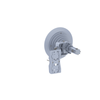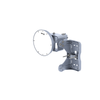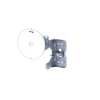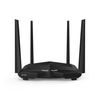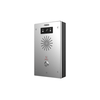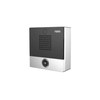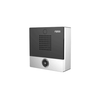Networking Accessories - Cable
Contact Us
How we can help you
Efficient Cable Management
Cable management is the organization of cables connected to electrical devices. This includes power cables, network cables, audio/video cables, and many others. Managing cables is a key aspect of a clean and safe home or work environment.
Electrical devices often require multiple cables. For example, a desktop computer may require a power cord, Ethernet cable, and multiple USB cables for peripheral devices. A home theatre system may include multiple power cables, as well as A/V cables for HDMI and an analogue audio connection. The resulting pile of cables, if not managed properly, can easily become a tangled mess.
Cable management offers several benefits:
- It provides a cleaner workspace or living area.
- It makes it easier to add or remove devices and cables.
- It protects cables from crimping or other damage.
- It prevents cables from disconnecting unexpectedly.
- It limits interference from other cables.
Cable management may be as simple as a tying a few cables together with adjustable cable clips. This type of cable management is often all that is required for a home computer setup. In some cases, a cable sleeve or a cable cover below a desk may help move cables out of the way.
Managing cables can also be a complex process. For example, network engineers may need to organize hundreds of network cables from a server rack that connect to power outlets or network switches. This type of organization requires choosing the right cable length and correct cable management sleeves so that cables can be easily added or removed.
Regardless of the application, cable management is an important part of any electronic setup. Simple cable management accessories, such as cable ties and cable sleeves, can turn a tangled pile of cables into a clean and organized space.
Cable Management: Why Is It Important?
The overall process of cable management is important to any companies’ cable setup. Whether it be gigantic data centres or one room installations, clean cable organization is a win win for both sides. The cable itself is vital for your business to be up and running so proper care should always be considered. Let’s look at some reasons why taking care of your cable installation is important and what is cable management.
What is Cable Management?
Cable Management is a term used to describe the way a cable network is set up. Cable management involves organizing your cables and hardware in a way so that it is easily identified and troubleshooted. This task takes the ease off of any future upgrades, repairs and giving your setup a professional look.
Let's get into more detail on why you can benefit with proper cable management. No matter what size your set up is.
Why Is Cable Management Important?
Efficiency
Making our installations more efficient is one of the most beneficial tasks a person should consider. Not only does it save time but can decrease issues down the line. This is the plus side of proper cable management. Cable management is the organization of electrical or optical cables in a cabinet or an installation. The term comes from the goal of planning. Cable installations vary from job to job but for the most part you can see how difficult it is to properly situate each cable to make it easy to work with. Problems can happen down the line with too many cables around each other with possible issues of unplugging or identifying which cable is the cause. Therefore, cable management is very crucial to a smooth workplace and installation.
Safety
Proper cable management can increase safety measures in the workplace. Fire is a cause for concern after cable installation and loose cable can become tangled with each other possibly creating a spark. This spark can then turn into a fire damaging your network, data centre and building. There is also the chance of someone coming by where the cables are installed and tripping or catching on the cables resulting in an injury. You never know what might happen and it's best to keep a clean and organized setup to reduce any chance of this.
Diagnosis
Can you imagine the difficulty in identifying the problem with your cable when they are all loosely organized or not marked? You see pictures from time to time of installation where cable is all over the place and you cannot identify which cable is not working properly. Correct cable management can make life easier when going back to troubleshoot the problem with your cable. Organizing your network with various colours can help you trouble shoot problems down the line and can help in managing future additions. Plus, you'll get major props from others for a well-managed setup.
Air Flow
An important aspect to cables longevity is the abundance of air flow during installation. The more air flow the better is the goal when cable is connected/running. This increases energy efficiency as well. Keeping temperatures low and consistent is beneficial to cables structure and performance. Increased temperatures can damage the cables jacket and do harm to its inner workings. Keeping your cables tied together and out of the way will open airways to get to the cables to prevent temperatures from possibly increasing surrounding the cables.
The nature of the cable industry is that is always changing. New categories of cable are being constructed as we speak. Another reason why cable management should be done is to make upgrading later down the line a little easier. We all want to be had the most current technologies, so our business or home networks stay working efficient and properly. So, go ahead and check out your installation and evaluate whether re-organization can and should be done.
Solving Cable Management Problems
Cable management is often overlooked when designing technology solutions, but poor cable management can lead to a multitude of problems.
- Is your cabling tangled like spaghetti?
- Do you have trouble tracing individual cables due to the congestion?
- Have you ever heard a company executive walk through the data centre and make a comment like, “We spent a million dollars on that technology, and you can’t even see it through that mess?”
If you answered “yes” to any of the above questions, you may have a problem.
There is no “magic bullet” for cable management that solves every issue. It takes discipline within the team that handles the cabling and it also requires a plan that addresses every potential major problem.
Important Factors to Consider
Follow a proper structured cabling design.
- Use the TIA-942 standard as a roadmap for your data centre. This is the most critical point to reducing the cable mess and congestion.
Use racks and cabinets with vertical cable management.
- Avoid racks and cabinets that are 21 inches wide and do not have vertical cable management channels. With no vertical management, all of your cabling will end up in front of the equipment in the racks.
Design with room for growth.
- When you account for growth, you can utilize horizontal rack mount cable managers. These managers help keep the rack clean and well-organized.
Keep patch cables of various lengths in stock and on-site.
- So many changes are made under duress, and many times a cable that is too long is used. If you have various lengths available, you can avoid this mistake.
The Best Cable Management Rules to End Cable Clutter
Always Measure First
Every home and office is different from the next, so if you're thinking of using length-oriented products like surface raceway, wire loom, wire duct, or conduit to manage cable, be sure to measure carefully before each cable management project you undertake. Proper measurement saves time and frustration: it ensures that you'll have plenty of product on hand to protect each cable run, so you won't need to halt mid-project to wait for more to arrive.
Never Exceed Fill Capacity
Whether you're dealing with wire loom, cable trays or heavy-duty cord protectors, one of the cardinal rules of installation is to never overstuff a cable management device with cables. By exceeding fill capacity, you run the risk of crush-related attenuation, insulation damage, crosstalk, and even - in the case of power cables - overheating and fire. Professional installations using duct, conduit or cable trays should consult TIA/EIA, NEC and/or manufacturers' guidelines for product-specific fill capacity specs. If you opt to harness home theatre or workstation cords with split wire loom or braided sleeving, the rules are less exacting: just gather together the cables you'll be containing, measure the diameter of the bundle, and select a product whose diameter is slightly greater than that.
Do Not Over-Tighten Cable Ties
When using cable ties, it's important to snuggly fasten them around cables without going too far and over-tightening them. Cable ties are probably the longest standing, easiest-to-use and least-expensive form of cable management, but they can easily cross the line between organized cords and squished cables. Too-tight cable ties can damage cable insulation and inhibit proper signal transmission, but there are a few products out there that can prevent you from going overboard. Mille-Ties are a uniquely designed, ultra-flexible breed of cable tie, which automatically stop themselves from ratcheting tighter once they've reached their ideal tension. Cabe tie tensioning and cut off tools can also be a big help; these gun-shaped devices quickly tighten standard cable ties to a safe tension, and then automatically trim off the ends.
Label Your Cables
It doesn't matter if you're a professional network installer or an amateur home theatre buff - cable organization just isn't complete if cables aren't properly labelled. Labelling helps to isolate cables for less-frustrating troubleshooting and maintenance and takes the confusion out of reconnecting cables to the proper ports. CableOrganizer.com carries an incredible variety of label printers, from light-duty models for labelling cords around the house to professional-grade units that can tackle hundreds of network patch cords without breaking a sweat.
Use Grommets to Protect Cable Pass-Throughs
Sometimes, the easiest way to get cables where they must go is to cut access holes in a desktop, cabinet, or server enclosure to run them through. Whether the holes are made in wood, plastic or metal, the edges are oftentimes rough, and can pose an abrasion threat to cable insulation. Grommets pop into pass-through openings to neatly buffer the edges, create a gentler path for cables, and leave your desk or cabinet with a clean and polished appearance.
An overview of cable management systems
There are a wide variety of containment systems available to organise and store cables within an installation. They tend not to be used exclusively for a wiring system, and the containment system chosen is often as much decided by the budget and practical considerations of the building it is being installed in as the cabling type itself.
Fixings in cable management
With such a range of cable management options available, ranging from lightweight cable trays through to heavy trunking, the choice of fixings for an installation needs to factor in both the weight of the cable management solution and the cables that it is carrying. Specialist advice must be taken from structural engineers on site, or the fixings manufacturers themselves on the weight the fixings can carry. In cases of heavy loads, anchor bolts or brackets may be used to secure things safely.
What is a cable tray system?
A cable tray system is a unit or set of units and fittings which form a rigid structure to secure or support electrical cables and raceways. It allows the safe transport of wires across open spaces and is effectively the structural component, or skeleton, of a building’s electrical system.
What types of cable management systems are there?
There are lots of different options for containment systems, depending on the types of cables and the building or area where the system is being installed. Some of the most common include:
- Cable baskets– lightweight and easily connected, these usually clip together making them quickly installed. They are often used for Category 5A and Category 6 TCP/IP data cabling but can be used for many types of cable that have more than basic insulation. This includes PVC / PVC 6242Y, MICC, fireproof or steel wire armoured cables.
- Ladder racking and tray work – mostly used in industrial installations, as well as for MICC and other small soft-skinned cables. Ladder racking is for heavier cables, including armoured cables, because it is strong enough to withstand more weight than a cable basket.









































